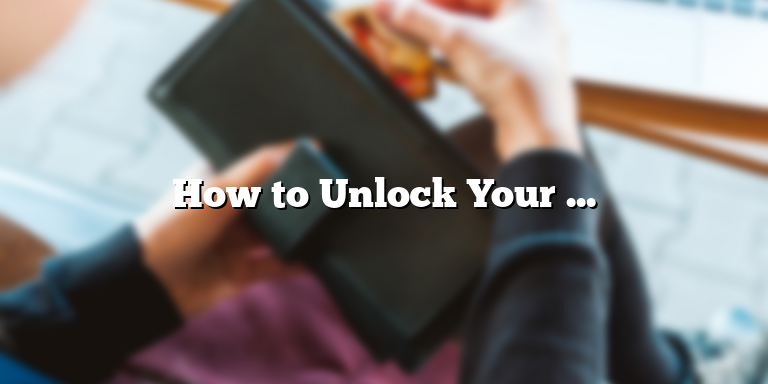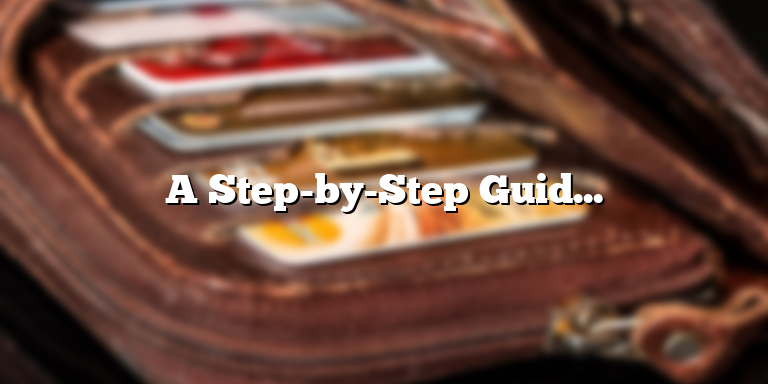
How to See If Someone Checked Your Location on iPhone
Understanding Your iPhone Location Settings
Everyone values their privacy, especially when it comes to their location. It is important to know who can track your location and why. Your iPhone has settings that allow you to see when and where your location was shared with individual apps and people. Here’s how to understand your iPhone location settings:
First, go to your iPhone’s Settings app and then tap on “Privacy.” From there, select “Location Services,” and scroll down to “System Services.” Here, you’ll find a list of settings for different features that use your location, such as Find My iPhone and Emergency SOS.
If you scroll further down, you’ll see a section for “Significant Locations.” This is where your iPhone tracks the places you frequently visit to improve location-based suggestions and other features. You can toggle this feature on and off or delete your stored locations at any time if you’re uncomfortable with this level of tracking.
Another important section to note is “Share My Location.” This feature allows you to share your location with specific people or groups. If you have this feature turned on, you can see who has access to your location by tapping on “Find My” app from your home screen and then tapping “Me” in the bottom right corner. From here, you can adjust who has access to track your location.
If you suspect that someone has been checking your iPhone location without your knowledge or permission, there are a few steps you can take to verify this.
The first step is to check your location history to see if your phone has been in any unusual places. To do this, go back to “Privacy” in your iPhone settings, then select “Location Services” followed by “System Services” and “Significant Locations.” Here, you’ll see a list of all the places your phone has been and how long you stayed there. This may give you a clue if someone has been using your phone to track your location.
You can also use the “Find My” app mentioned earlier to see if anyone has been checking your location recently. If someone has asked to share your location or you have given them permission to do so, their name will appear in the app. However, if someone has been checking your location without your knowledge, their name will not appear in the list of people who can track you.
If you suspect that someone has been tracking your location without permission, it is important to take action to protect your privacy. You can start by turning off location sharing for specific apps or people, or by turning off location tracking altogether in your iPhone settings.
By understanding your iPhone location settings, you can take control of your privacy and ensure that only those who you trust have access to your location information. Remember to regularly check your settings and location history to ensure that your privacy is protected.
Checking Your Location Sharing History
Have you ever wondered who might be checking your location on your iPhone? Well, with the “Share My Location” feature, you can view a log of who has checked your location. This feature is particularly useful for people who like to keep their personal information private.
To access your location sharing history, first, go to your iPhone’s Settings and click on your name at the top of the page. Next, select “Find My” and then “Find My iPhone.” From here, scroll down to the “Share My Location” option and tap on it.
You will see a list of people who are currently sharing their location with you. To view your location sharing history, tap on “From” at the bottom of the page. This will bring up a list of people who have recently checked your location.
If there are people on the list who you don’t recognize, you can tap on their name to see more information about them. Depending on how they are sharing their location with you, you may be able to see their current location, their location history, and even their device’s battery level.
It’s worth noting that this feature only works if the person has checked your location within the last 24 hours. If it has been longer than 24 hours, their name will not appear on the list.
Overall, if you are someone who values your privacy and wants to keep track of who is checking your location on your iPhone, the “Share My Location” feature is a great tool to use. With just a few taps, you can see a log of who has checked your location recently, giving you peace of mind and control over your personal information.
Enabling Restrictions
Location sharing can be incredibly useful, especially in emergencies or when you need the assistance of a friend or family member. However, there may be times when you want to keep your whereabouts private. Fortunately, your iPhone offers several options that allow you to control who can access your location information. One of the best methods to do this is to enable restrictions.
To enable restrictions on your iPhone and secure your location information, follow the steps below:
Step 1: Open your Settings
You can find your iPhone’s Settings app on your home screen. It looks like a gear icon.
Step 2: Tap on “Screen Time” and then “Content & Privacy Restrictions”
Screen Time is a feature that allows you to set limits on certain apps and features. Content & Privacy Restrictions, on the other hand, gives you control over what you allow to access on your iPhone. To activate this feature, you first need to go to the Screen Time settings and scroll down to find Content & Privacy Restrictions.
Step 3: Turn on Content & Privacy Restrictions
Once you’ve located the Content & Privacy Restrictions settings, tap the slider to turn on the feature. You will be prompted to set a passcode to secure these restrictions. This passcode should be different from the passcode you use to unlock your phone and should be one that only you know. After you enter your passcode, you will have access to a list of categories that you can restrict on your iPhone.
Step 4: Restrict Location Services
One of those categories is Location Services. You can restrict this category to prevent apps and services on your iPhone from accessing your location. This setting is particularly useful if you want to limit access to your location information while you’re using your iPhone. You can also choose which apps you want to allow or disallow to access your location.
With these steps in place, you can be confident that your location information is secure, and nobody can check your location without your consent. Enabling restrictions does not prevent you from using your location information to your advantage, but it does put you in charge of who has access to it.
In summary, enabling restrictions is an effective method of protecting your location information on your iPhone. It’s a simple process that’s well worth the time and effort it takes to set it up. By following the steps outlined above, you can prevent others from checking your location without your permission and have peace of mind.
Using Third-Party Apps
If you are curious about whether someone checked your iPhone location, there are third-party apps available in the market with tracking features capable of notifying you when someone checks your location. However, it is important to note that not all of these apps are trustworthy, and some may compromise your privacy. Therefore, it’s essential to be cautious while choosing such applications.
When choosing third-party location tracking apps, it is advisable to go for those with good user reviews and ratings. Check the app’s developer information to verify their authenticity as well. The top-rated apps with user credibility are Find My Friends, Life360, and FamiSafe Locator.
These apps work by allowing you to share your location with specific individuals. You can then track their location in real-time, and the app alerts you when someone checks it. Find My Friends, for instance, sends a notification to your phone every time someone checks your location. FamiSafe Locator, on the other hand, notifies you not only when someone checks your location but also if someone tries to tamper with it.
It is essential to go through the privacy policy of any app before installing it as it will provide you with insight into the kind of information they can access from your phone. Additionally, certain apps may require you to provide personal information such as email addresses, phone numbers, and social media account access, which may compromise your privacy. Therefore, it is vital to verify these requirements before downloading them on your phone.
While location tracking apps can help you track who has checked your location, they can also expose your location to strangers who may have malicious intentions. Therefore, you must only share your location with people you trust and ensure the location is turned off when you are not using it.
The Bottom Line
The concept of tracking someone’s location is intriguing, and you may want to know who checks your iPhone location. While there are third-party apps available that can do this, it is essential to be cautious to avoid compromising your privacy or exposing your location to unwanted strangers. It is always wise only to share your location with trusted people and uninstall any third-party apps with suspect privacy policies. As always, stay safe online!
Talking to the Person Directly
One of the easiest and most reliable ways to determine if someone has checked your location on iPhone is to ask them directly. Most people are not secretive about checking someone else’s location, and they’ll often tell you the truth as soon as you ask them.
It may not be easy to ask someone if they’ve been stalking your location, but it’s essential to clear the air and avoid any potential misunderstandings. If it turns out that they’ve been checking your location without permission, it’s important to set boundaries and communicate the need to respect your privacy.
If you’re not sure how to start the conversation, you could say something like, “Hey, I was just curious if you’ve been checking my location on your phone. I noticed that it’s been updated more frequently than usual.” This approach is non-confrontational and allows the other person to give an honest answer without feeling attacked.
If they admit to checking your location, you could go on to explain your concerns about privacy and why it’s important to respect each other’s personal boundaries. Have an open and honest conversation, and try to reach a mutual understanding of what is acceptable behavior when it comes to checking each other’s locations.






